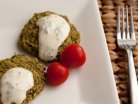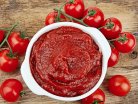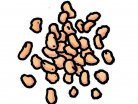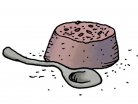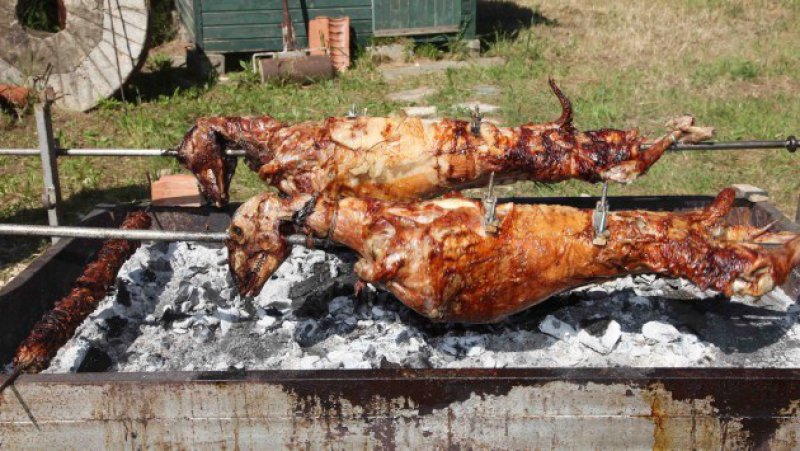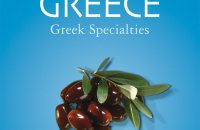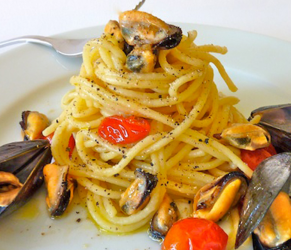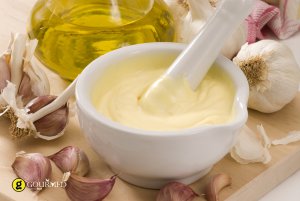My friend Ilia once spent half a day in a London park turning a whole lamb over a pit of hot coals, anticipating the moment when he’d cut the crisp garlicky meat and find in every morsel the smells and flavors that would carry him back, even if momentarily, to Greece at Easter. Instead, as if to confirm that wet, soggy England was just the wrong place to be at the height of spring, the lamb turned out to be a leaden uncooked mass, spit-roasted over too low a heat from too high a distance. Demoralized, disappointed, but persistent, they ate it anyway, accompanied by a salad of tasteless English lettuce, potatoes, and wine in vast amounts to help them forget.
Moral of the story: Spit-roasting a whole lamb (or goat) isn’t as easy as it seems.
While I have never attempted to sully my otherwise untainted police record abroad by tying up an animal and burning it at the stake (which is what a New York cop would probably accuse), I couldn’t conceive of Easter in our village without partaking in the rite. Although the souvla is otherwise a tradition of mainlanders, especially those from Roumelli, it makes for such a good time that the tradition has been adopted by almost the entire country. There are though certain rules of thumb to follow before setting up the wood or coals and rotisserie.
First, though, let me say that despite a deft hand in matters culinary, I, personally, do not attend the spit. Anything having to do with whole animals and open pits and roasting and communal cooking has been, since remotest time, the realm of men. It’s easy to understand why. The pitmaster needs certain strengths that are unquestionably masculine: First, a certain musculature that enables the cook to lift the animal, fit the long metal skewer through the length of it, and to tie it securely. While either sex can achieve the skillful hand needed for spicing and marinating the poor little lamb, sheer endurance is needed to roast it. Here, mien and body size again come into play, since over the four or five hours it takes to roast the lamb to lemony perfection, the pit master usually is plied with immeasurable amounts of wine.
Here, from the collective memory of the men I know who have from year to year assumed the tedious responsibility of turning the spit, are a few words of advice for how to do it properly.
First, the lamb itself should be plump without being too fatty. Nursing lambs are under three months old, and should weigh in at around 5-7 kilos / 10-14 pounds. No matter what the butcher tells you, chances are that anything over that is four months and older, hence not a tender young spring lamb.
Make sure the lamb looks and smells fresh. It should have a bright color, and there shouldn’t be any sort of sticky mucouslike film anywhere on the animal–the telltale sign that it was either slaughtered too long ago or that it wasn’t properly refrigerated. You can tell a good lamb, too, from its liver–if the butcher cuts it out for you to examine. It should be dark and smooth, with absolutely no blotches.
If you are in Greece for Easter, you might be faced with the dilemma to buy Greek or not. As for Greek vs. imported lambs, regardless of what the butcher promises or the sign reads, there is a simple rule of thumb to tell the difference. Imported animals usually have their heads and viscera removed. Greek lambs are intact. One word of caution: Buy the lamb three or four days before Easter and leave it “to rest” in the refrigerator (NOT the freezer).
As for the actual spit-roasting: Opt for either an electric or battery-operated spit. Manual roasting is long, hard work. Make sure you have ample fuel–either charcoal or wood, and include some fragrant wood in the bundle. Olive wood, even dried twigs of herbs, lend a lovely fragrance to the meat. Have salt, pepper, oregano or thyme, garlic, olive oil, and plenty of lemon juice on hand for the marinade.
Remember, the whole point of spit-roasting is that the meat cooks slowly and steadily. The skillful grillperson knows how strong the heat source has to be and how far away from it the animal should turn. One rule of thumb: The embers have to remain hot throughout the several hours it will take to roast the lamb. In the beginning, the lamb has to turn quickly and at some distance from the heat so as not to burn. Once it has taken some color, move it several pegs closer to the embers. Throughout the entire roasting process, though, it should be brushed frequently with the marinade. I medium sized spring lamb (5-7 kilos) will take at least 4 hours to roast on a spit. Always try the meat before removing the animal from the fire, and always let it rest for at least 30-40 minutes before serving.

